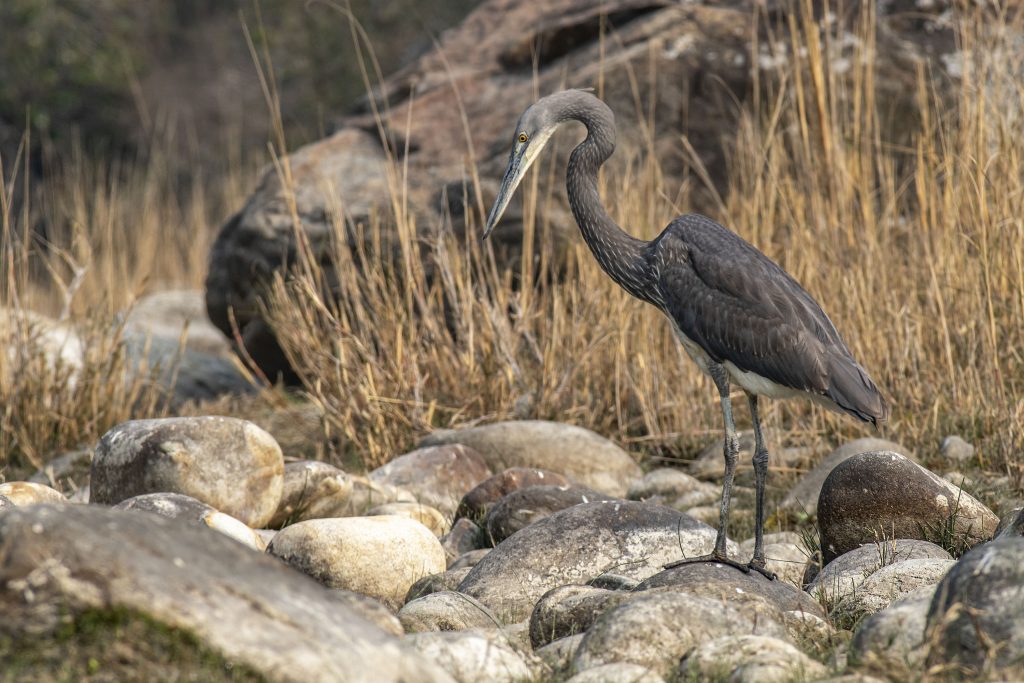The Imperial Herons
With a population of less than 200, the White-bellied Heron is among the 50 rarest birds in the world. They are also referred to as the gentle giants because of their mild nature. Bhutan shelters a little over 30 white-bellied herons. The Imperial Asian herons were once found across the lower slopes of the Himalayas from Nepal to Myanmar, today, the birds live under threat of extinction in a few places on earth – in north-eastern India, northern Myanmar and Bhutan.

This critically endangered bird almost on the brink of extinction has found itself an abode along the banks of Punatshangchu basin in central Bhutan. In Bhutan, eight nesting sites have been identified amongst lofty flowing waters with pebbly substrates and Chir pine forests. Another characteristic feature of the herons is their unique courtship system which begins in the winter from January to February as the river water recedes. The birds chase after each other playfully with sticks, catching fish, basking in the sun and calling out to partners.
The reason for the decline in range and population is clear – hunting, disturbance and destruction of habitat. These gentle giants need long stretches of undisturbed and unpolluted rivers in which to fish. In Bhutan, they are safe from international disturbance and can be easily spotted during the non-breeding season, from May to early March – feeding along their favorite spots in the Mochu and Pochu Rivers in Punakha.
The graceful bird is also occasionally seen at Kamechu along the road from Wangduepho- drang to Tsirang and along the Mangdechu River in Zhemgang. During the nesting period from early March to May, they are more secretive. In areas where they are hunted (which encompass most of the bird’s range outside Bhutan), these herons are excessively shy.
In Bhutan, the birds are not hunted or persecuted, and the birds exist in areas close to human habitation. Even more importantly, the larger rivers in Bhutan are mostly unpolluted and undisturbed, thus providing enough fish to support the birds. Because of its impressive size, locals consider the heron a local deity or nyep.
Although some of Bhutan’s rare birds, such as the Ward’s Trogon, Beautiful Nuthatch, Rufus-necked Hornbill and Black-Necked Crane, can also be spotted in other places outside Bhutan, the White-bellied Heron’s sighting can perhaps only be guaranteed in Bhutan. Therefore, it is all the more important that every effort is made to protect this rare bird and its habitat.
With a responsible society and a pro-active government, bird watchers in Bhutan are comfortable in the knowledge that not only the herons, but also other species of birds can find a safe haven in Bhutan as a part of its natural heritage.

